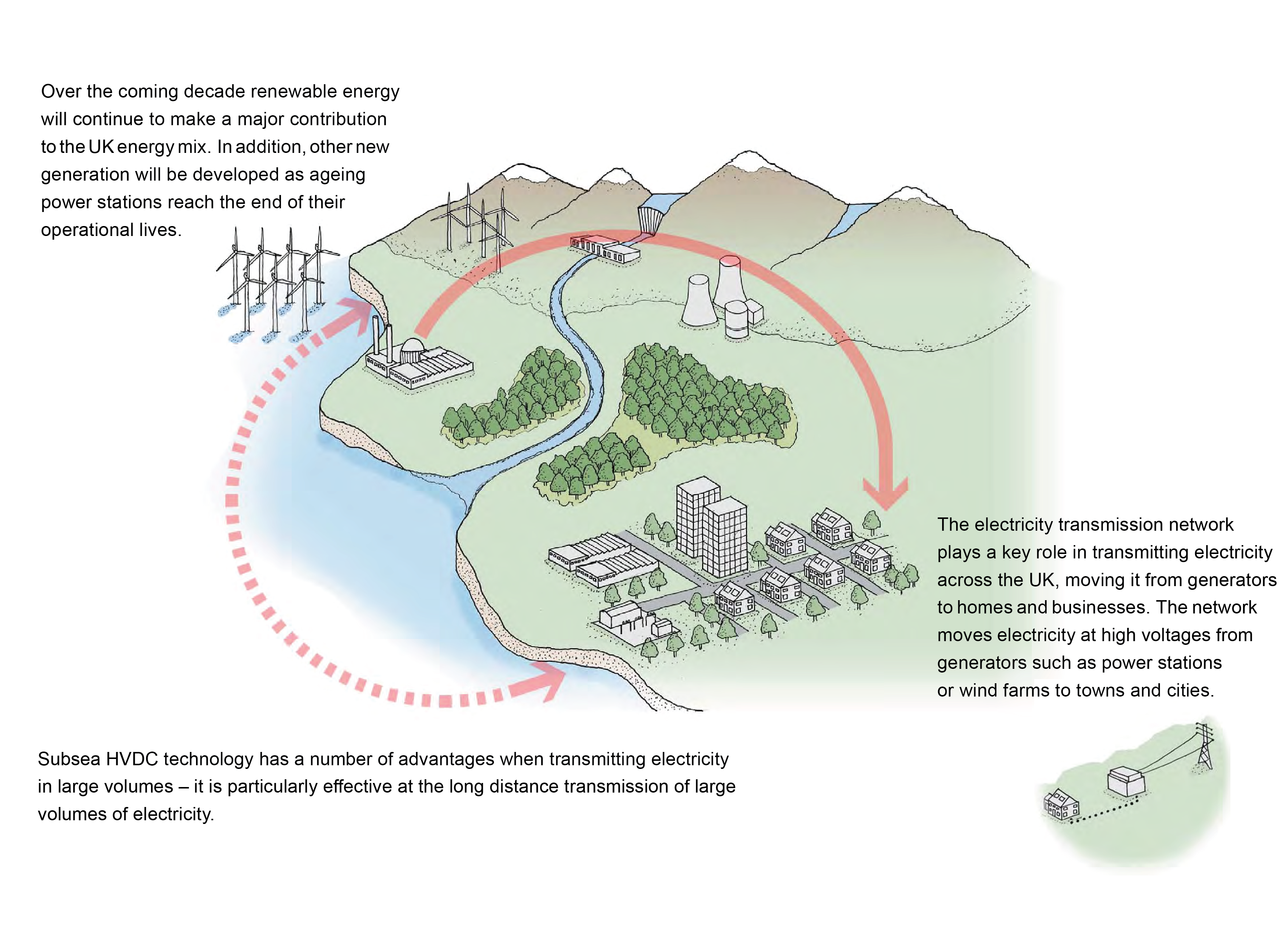
Alternative current (AC) electricity can have its voltage increased or decreased using transformers, making it safe to us in our homes, businesses, schools and hospitals.
But to transmit electricity over long distances it is more efficient to use HVDC, which operates as a fixed voltage, requires fewer conductors (cables or wires) and incurs less power loss than AC networks.
AC electricity is converted into HVDC electricity using specialised equipment at a converter station. The HVDC electricity can then be transmitted over long distances – hundreds of kilometres – via underground and subsea cables to a second converter station, where it’s converted back to AC to flow in to the local electricity network.
By doing this, projects like EGL4 can remove ‘bottlenecks’ on the existing transmission network while reducing the need for more onshore power lines and associated infrastructure.